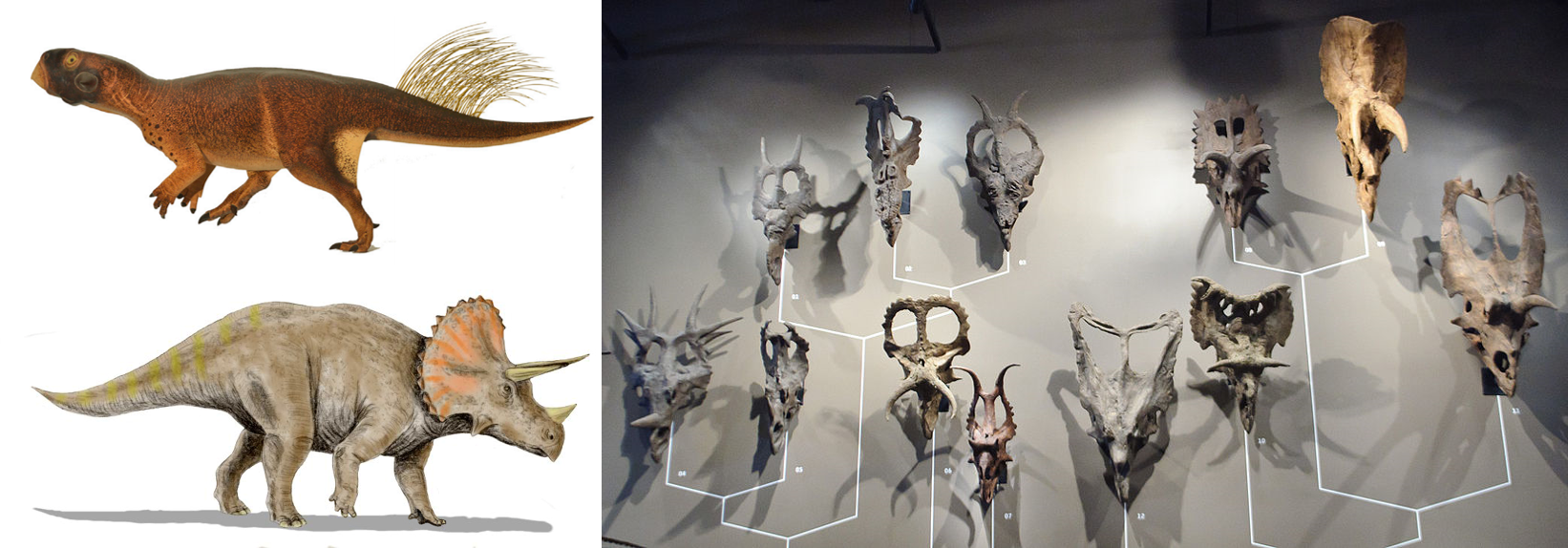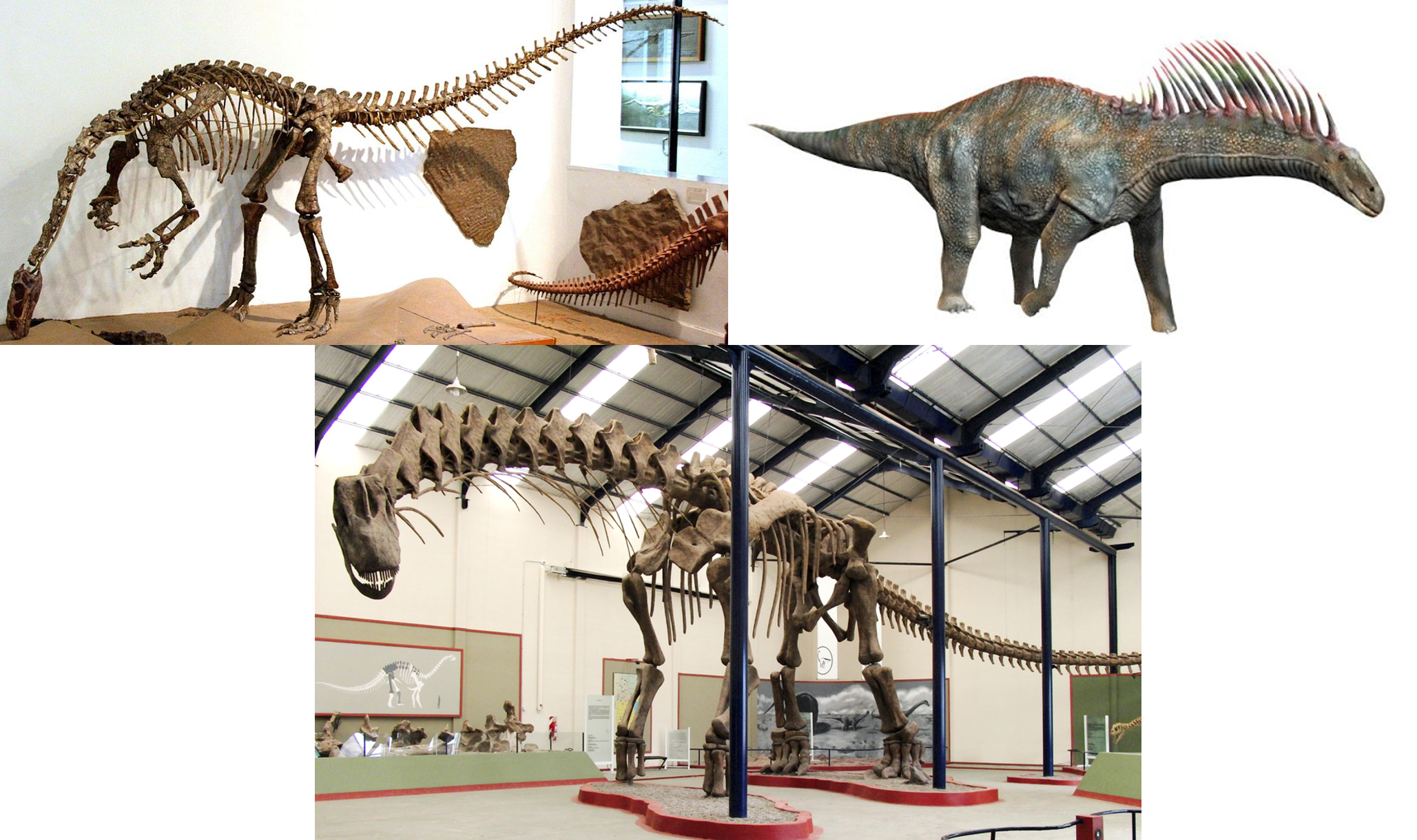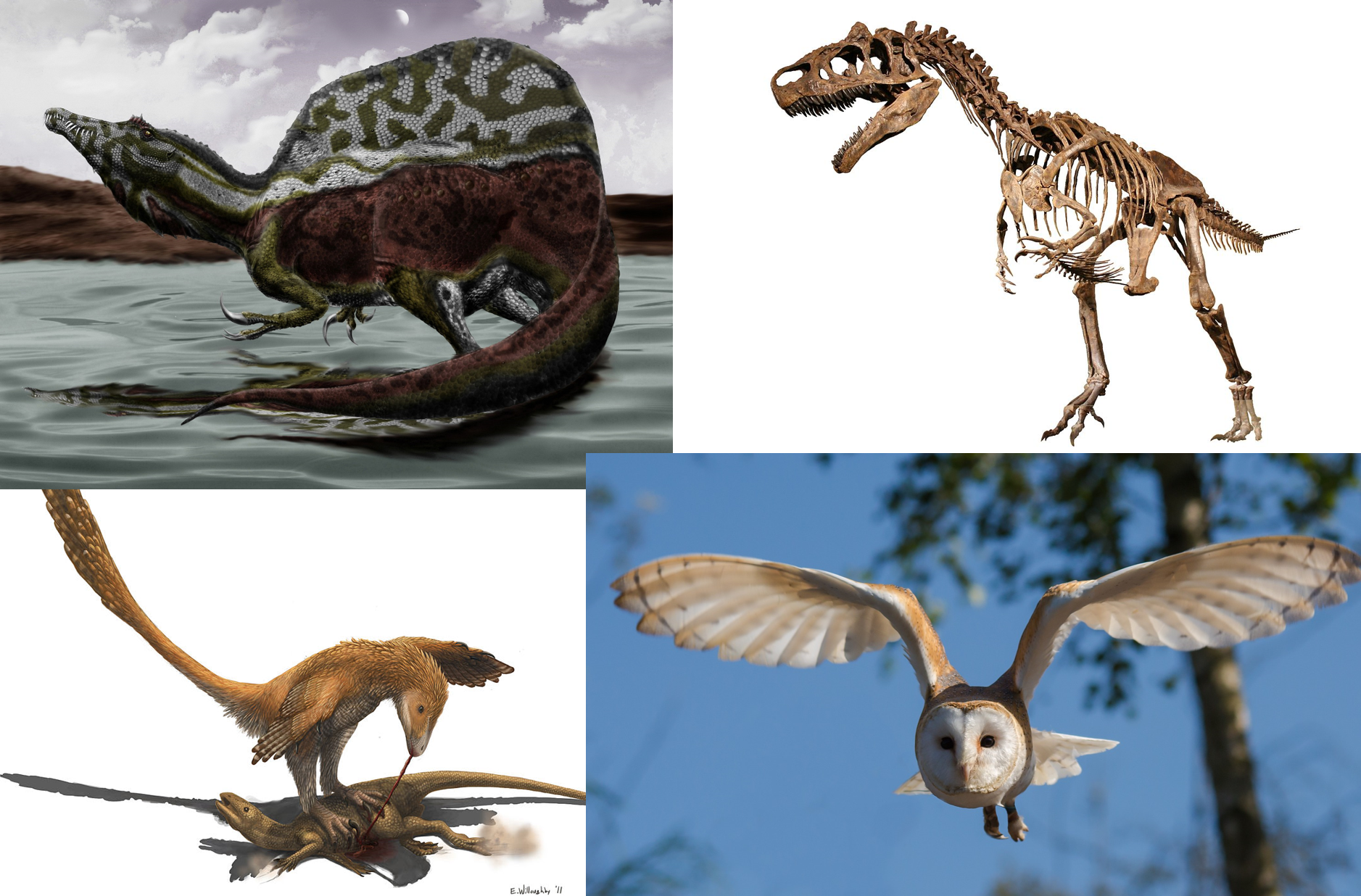Listen to Episode 21 on PodBean, Spotify, YouTube, or wherever you get your podcasts!
There may be no group of prehistoric organisms more iconic, more widely-studied, or more often-requested by our listeners, than the subject of this episode … Dinosaurs.
In the news
More Dinosaur Colors!
An in-depth analysis of the coloration of Sinosauropteryx reveals hints of how it hid itself within its environment. [Link]
How Herbivores Change the World
This study compares plant remains from before and after the rise of herbivorous dinosaurs, revealing how big herbivores affect the spread of plant nutrients. [Link]
An Indian Ichthyosaur
The first Jurassic ichthyosaur from India is also one of the most complete! [Link]
Saber-tooth DNA
Genetic analysis of two famous saber-toothed cat genera reveals interesting new details about the cats’ evolutionary histories. [Link]
Meet the Dinosaurs

Dinosaurs, like any group of animals, are defined by their shared features and ancestry. The shape of their hips and limbs, the position of their legs, the curve of their necks, and more – these are the traits that unite Dinosauria. They sit on the archosaur family tree, opposite crocodylomorphs and very close to pterosaurs.
Commercial enterprises – Hollywood, toy stores, etc. – have a hard time keeping Dinosauria straight. Animals that don’t share those specific features, and who don’t share dinosaurian ancestry, are NOT dinosaurs, including: crocodiles, pterosaurs, mosasaurs, plesiosaurs, ichthyosaurs, Dimetrodon, mammoths, and everything else that doesn’t fit on that tree in the image above.
These are the major groups of dinosaurs:
Thyreophora – The armored dinosaurs: the stegosaurs and ankylosaurs.


Marginocephalia – the ceratopsians and pachycephalosaurs.


Ornithopoda – diverse, specialized herbivores.

Sauropoda – long-necked, often enormous herbivores.

Theropoda – bipedal carnivores (mostly), including the only living dinosaur group: the birds.

Early Dinosaurs
Dinosaurs appeared in the Triassic Period, with the oldest definite members of the group dating to around 230 million years ago. Even as they diverged into the lineages that would ultimately give rise to all the diversity you see above, early dinosaurs looked very similar. In fact, paleontologists have a very difficult time figuring out exactly how early dinosaurs are related to each other, and to later groups, which is why there’s been a lot of talk about Ornithoscelida recently!

Dinosaurs belong to Archosauria, the group of reptiles that includes crocodylomorphs and relatives on one side, and dinosaurs and pterosaurs (and relatives) on the other. Dinosaurs themselves evolved among a diverse group of closely-related dinosauromorphs, as well as lots of early crocodylomorphs and therapsids (early relatives of mammals).

After the end-Triassic extinction, most of the dinosaurs’ terrestrial competition had been wiped out, clearing the way for this one group of ruling reptiles to take over the dominant niches on land, and hold them for nearly the next 150 million years.
If you want a fantastic source of general dinosaur info, check our Dr. Tom Holtz’s very thorough and up-to-date course, Dinosaurs: A Natural History.
Also, for a great depiction of the diversity and scale of Mesozoic dinosaurs, check out this great video!
—
If you enjoyed this topic and want more like it, check out our other dinosaur episodes:
- Episode 42 – Spinosaurs
- Episode 69 – Ankylosaurs
- Episode 87 – Ceratopsians (Horned Dinosaurs)
- Episode 101 – Sauropods
- Episode 120 – Tyrannosaurs
- Episode 150 – Stegosaurs
We also invite you to follow us on Twitter, Facebook, or Instagram, buy merch at our Zazzle store, join our Discord server, or consider supporting us with a one-time PayPal donation or on Patreon to get bonus recordings and other goodies!
Please feel free to contact us with comments, questions, or topic suggestions, and to rate and review us on iTunes!